Ford Continues Push into Greener Materials
by: Core77, 2012-09-27 21:00:00 UTC

Racing towards a greener future?
Forest product company Weyerhaeuser is one of the largest in the world, managing over 20 million acres of woodlands with sustainable practices (like planting more than they're harvesting). In a promising trend, Ford has been collaborating with Weyerhaeuser to "prove out" a cellulose-based material that can replace plastic in their interiors. The idea is to use Weyerhaeuser's sustainability know-how to responsibily harvest wood—or waste byproducts, like chips—to create materials without the need for petroleum. "Specifically," says a Ford rep, "replacing fiberglass, minerals and/or petroleum with a natural, plant-based material can sequester CO2 and ultimately lead to a smaller carbon footprint, among other benefits."
Ford has been dipping their foot in the alternative materials pool for some time; earlier we told you about their soybean, denim and bottle-based materials, and the collaboration with Weyerhaeuser is three years old. An announcement today reveals some of the results of that research:
[We've] found that Weyerhaeuser's cellulose-based plastic composite materials meet [our] stringent requirements for stiffness, durability and temperature resistance. Further, components weigh about 10 percent less and can be produced 20 to 40 percent faster and with less energy when made with cellulose-based materials compared with fiberglass-based materials. These weight and process savings can enable equivalent or reduced component costs.
...Several prototype vehicle components were created from the cellulose-based material and put through a battery of tests by a team led by Dr. Ellen Lee, Ford's plastic research technical expert. "We found that working collaboratively at an early stage has accelerated the development of a material that has a high thermal stability, doesn't discolor and doesn't have an odor," said Lee. "That's important because it opens the door for use of the material in a wide range of applications that could eventually add up to significant environmental benefits across our product line."
...Prototype armrests were tested as potential components that could feature the cellulose-based material. Not only can the cellulose material be used in interior applications, but the high level of performance provided by the cellulose fibers also makes it a good candidate for exterior and under-the-hood applications as well.
"Cellulose fiber is a great renewable resource that already has established infrastructure around the world, making it an ideal material for Ford's global products," said Lee.
Ford has already demonstrated their commitment to greener materials by switching over to soybean-based cushions in all of their North American vehicles, which has resulted in an estimated savings of five million pounds of petroleum. In terms of global consumption that's just a drop in the bucket, but imagine if every carmaker worldwide were to follow suit.
(more...)


 Ideo's CEO: 5 Reasons Global Firms Should Serve The Developing World
Ideo's CEO: 5 Reasons Global Firms Should Serve The Developing World
by: fast company, 2012-09-27 04:00:00 UTC
Wonder, "What’s in it for us?" Ideo’s Tim Brown says, "You’d be surprised."


 yung ho chang: material-ism at ullens center for contemporary art
yung ho chang: material-ism at ullens center for contemporary art
by: Designboom - Weblog, 2012-09-27 21:59:00 UTC
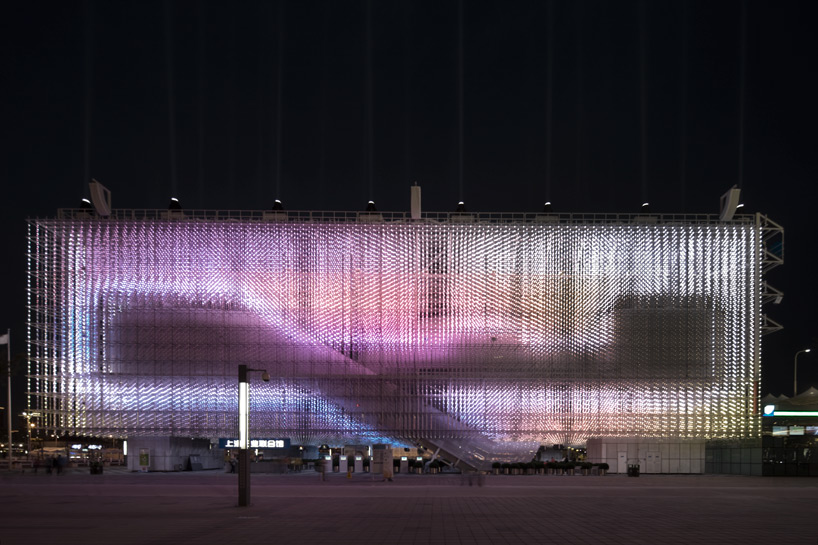
the interior of the UCCA great hall will be transformed into a hutong neighborhood with six modules of traditional chinese courtyard design, depicting aspects of his design
philosophy including inhabitation, construction methods, urbanism, tradition, perception and culture.
read more
Climate Change, Pollution to Wipe 3.2% From Global GDP by 2030
by: Environmental Leader, 2012-09-27 14:03:05 UTC

Climate change is already stripping 1.6 percent annually from global GDP, amounting to $1.2 trillion, a figure that will double to 3.2 percent by 2030 as temperatures escalate and carbon-related pollution continues, according to a DARA report. The Spain-based NGO’s report, “Climate Vulnerability Monitor: A Guide to the Cold Calculus of a Hot Planet,” estimates [...]
 Downturns in Pure Electric Vehicles
Downturns in Pure Electric Vehicles
by: Eco Geek Latest, 2012-09-27 12:27:36 UTC

There have been a couple of signs recently that consumers may not be quite ready yet for pure electric vehicles (EVs), or at least that manufacturers still have some work ahead of them to be able to provide an EV that has all the features that consumers want.
Toyota has drastically cut the number of eQ cars it plans to build to only about 100 vehicles, down from several thousand as were initially planned when the vehicle was first announced. (The eQ is an all-electric variant of their small iQ car.) But the company is far from abandoning vehicle electrification altogether. Toyota has also announced plans to have 21 different gas-electric hybrid models in its line by 2015. It is the all-electric vehicle that the company does not see as a viable market at present.
Meanwhile, a group of Nissan LEAF owners in Arizona got together to test their vehicles on their own to show the company that their vehicles batteries are prematurely losing capacity and are not able to reach the promised driving range. The LEAF owners felt that they were not getting sufficient responses to their complaints from the company and decided to take matters into their own hands. The hot Arizona environment was a particular concern from the outset, since the LEAF does not have a battery cooling system.
Electric vehicles certainly have niches in which they are an excellent option. But in many ways, they are not perceived as ideal for the wide range of driving that many people do. As automakers make improvements, these perceptions may well change, and more people will take up EVs. But there are a lot of ingrained consumer habits that will take more than a couple years to overcome.
 Good Vibrations with Paper Pulp Speaker; Pulpop by MollaSpace
Good Vibrations with Paper Pulp Speaker; Pulpop by MollaSpace
by: TreeHugger Design, 2012-09-27 13:00:00 UTC

Donut shaped and made of recycled pulp this USB rechargeable MP3 speaker is a rather cute sound amplifier.
Greening ICT (LinksDossier)
by: Euractive, 2012-09-24 13:29:18 UTC
Investments in information and communication technologies (ICT) are set to double by 2020 across the European Union, to match consumers' ever-growing hunger for online services. But this also comes at a cost for the environment in terms of electricity consumption and carbon dioxide emissions. The European Commission is now openly asking itself whether the industry should be regulated.
More »
Energy Efficiency is Critical in Home Design
by: Jetson Green, 2012-09-26 11:00:19 UTC

The housing market is “starting to gain traction,” according to AIA Chief Economist Kermit Baker, although people aren’t rushing to add home theaters and the like.
Rather, “home features and products attracting attention are generally focused on energy efficiency or accessibility around the home, as well as wireless systems and low-maintenance, sustainable products,” per Mr. Baker based on findings from the AIA’s Home Design Trends Survey in the second quarter of 2012.
- 66% of respondents report the popularity of adding insulation in the attic
- 52% of respondents report the popularity of energy management systems
- Popularity continues to increase for solar panels, geothermal heating and cooling, water reclamation systems, triple-glazed windows, tankless water heaters, water-saving devices, and recycled or salvaged materials.
[+] More of the Results of the AIA Home Design Trends Survey.
Related Articles on JetsonGreen.com:
- The Colonoscopy of Energy Efficiency
- Energy Efficiency is Pervasive These Days
- Getting a Home Energy Assessment


 Buchi Toy Collection by Fumie Shibata
Buchi Toy Collection by Fumie Shibata
by: mocoloco, 2012-09-26 21:06:45 UTC



 BraunPrize 2012: Winners Confirm Broadening Scope of Industrial Design
BraunPrize 2012: Winners Confirm Broadening Scope of Industrial Design
by: Core77, 2012-09-27 00:45:00 UTC

The BraunPrize wrapped up a record year, honoring 39 designs from around the world in their 2012 program. Over 100 design professionals (including former Heads of Braun Design Dieter Rams and Peter Schneider) making up this year's Design Forum gathered at Braun's Frankfurt headquarters today to hear final presentations from 3 Student and 3 Professional/Design Enthusiast finalists to award the winners for 2012's BraunPrize.
 Olivier Grabes and Dieter Rams
Olivier Grabes and Dieter Rams
The jury, consisting of Oliver Grabes (Head of Braun Design) Naoto Fukasawa (Naoto Fukasawa Design), Jane Fulton Suri (Managing Partner IDEO), Dr. Dirk Freund (Director of R&D Braun) and Anne Bergner (Former BraunPrize Winner and Professor of Integrated Product Design at University of Applied Sciences Coburg) had done most of the heavy lifting over 3 days in June. They combed through over 10 kilometers of paperwork (almost 2,400 entries) representing 73 countries from around the world and emerged with 3 finalists for the Student, Professional and Sustainability categories, as well as 15 notable entries from both student and professional entries representing National Winners.
 Naoto Fukasawa and Jane Fulton Suri
Naoto Fukasawa and Jane Fulton Suri
The Global Gold Winner for the Student category was awarded to Sebastian Reichel for Agil, a flexible walking aid. Using innovative materials and construction, Reichel started with the notion that a walking stick could be an extension of one's arm to provide stability and support. Through careful design research and engineering considerations he found that creating hollow chambers within an "S"-shaped handle allowed for a dynamic and natural motion from the user.



The audience got a special surprise when Dieter Rams raised his hand and approached the podium to do some user testing. Unfortunately, the product on display was just a design display, not a functional prototype. Congratulations to Sebastian on his win! His work sheds light on the importance of designing for the aging population as well as those with disability.
Silver for the Student category was awarded to former boyscout Jussi Koskimäki for his First Aid Cover, an emergency blanket that can provide basic CPR and aid guide to timid bystanders in an emergency situation. The Cover could be distributed through first aid kits and emergency locations in public places. Bronze went to Dirk Hessenbruch for Mo, a flexible bike share and urban mobility system (as seen on Core77).
 Dirk Hessenbruch's Mo System
Dirk Hessenbruch's Mo System
The Global Gold Winner for the Professional/Enthusiast category went to Känguru, designed by Berlin-based designer Oliver Klein. The father of two designed a baby carrier and bicycle seat in one as a "mobility concept for the urban context with Infant." While presenting his concept to the Design Forum, Klein shared his 6 driving design considerations: Ergonomic transition between baby carrier and bike seat, a lightweight frame design that was inspired by the hollow bone structure of birds, a quick and easy bike mount, tool-free disassembly for easy cleaning and care, and an option for custom-made frames through rapid prototyping. I particularly liked the adjustable sling for the baby that can accomodate children as they grow from 6-24 months.

(more...)

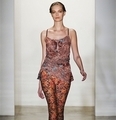
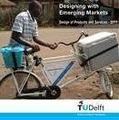





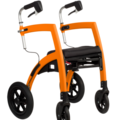
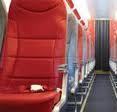
Comments by our Users
Be the first to write a comment for this item.